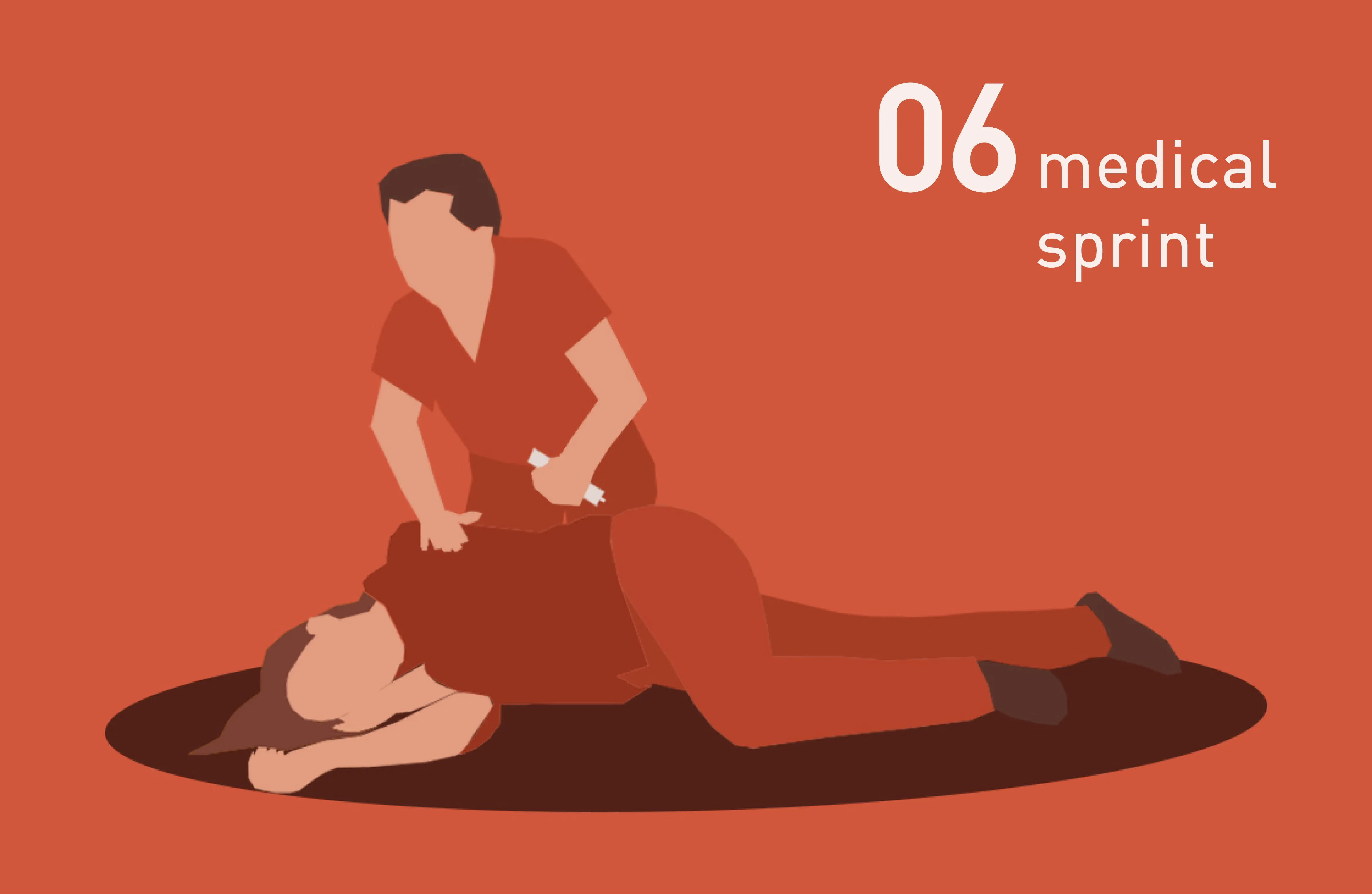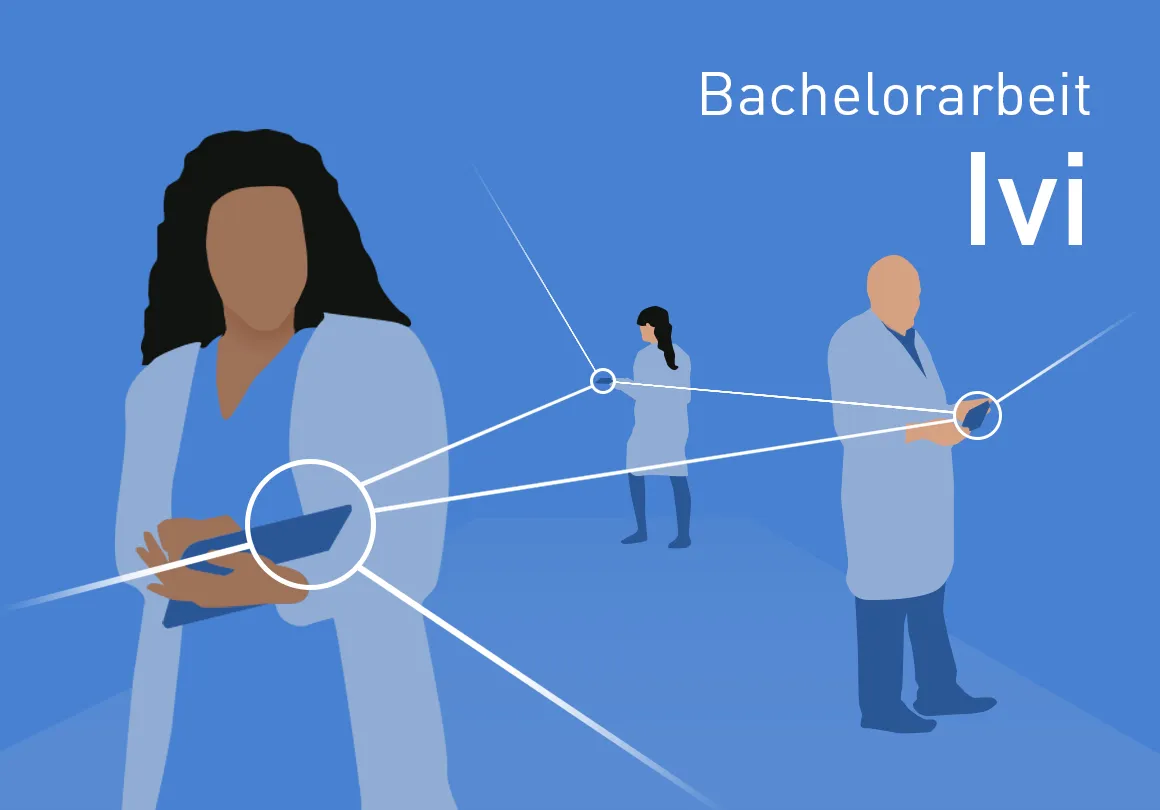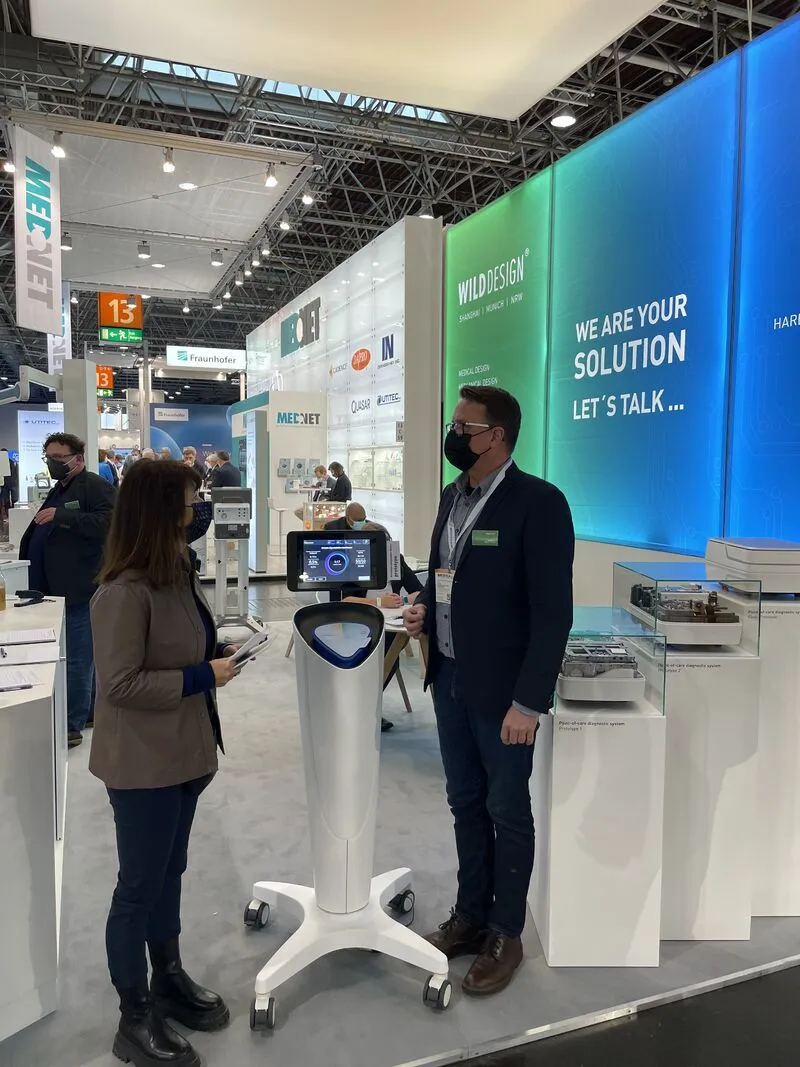Perspective
AlliGo. What to do in case of anaphylactic shock? | Design Sprint 6
The sixth mastermind project is thanks to Alice McCutcheon. During her internship at WILDDESIGN in Gelsenkirchen, the industrial design student from the U.K. looked into a relatively neglected topic: dealing with allergy shocks. If those affected are well informed about their allergy themselves, there is usually nothing to worry about. But what happens if someone suffers an anaphylactic shock in a restaurant, at school or at a party? How do you deal with the situation if the person concerned is unresponsive?
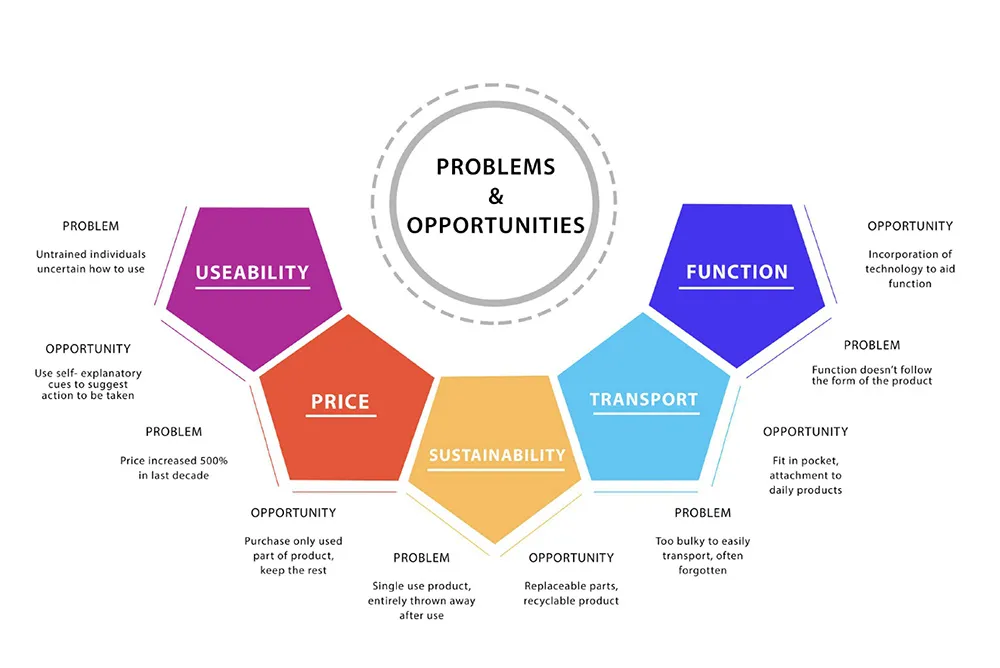
The initial situation
Difficulty breathing, skin rash, tongue swelling, heart problems, unconsciousness - these are all symptoms that can occur in the event of an allergic shock. Injections of adrenaline, known as EpiPens, are available as emergency medication. This temporarily constricts the blood vessels and widens the airways. Alice has identified and categorized product-related problems and opportunities of the syringes:
In emergency situations, further problems arise in connection with ignorance: Many people panic and don't know how to react. They often call the emergency doctor, who cannot always be there quickly enough. Forgotten EpiPens or lack of knowledge about how to administer them make the situation even more difficult.
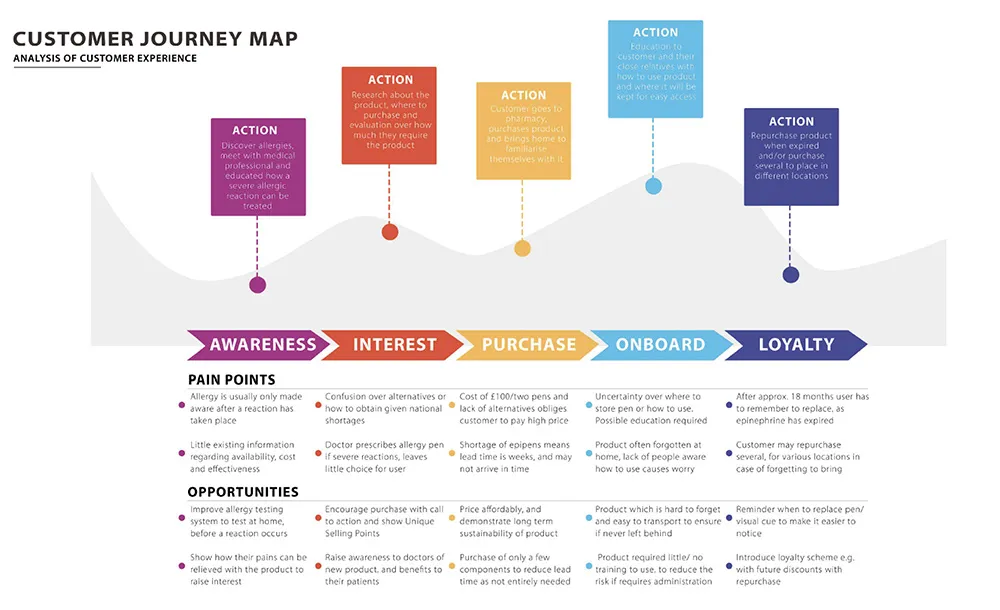
A customer journey and an exemplary persona led Alice to the main need for improvement:
- Home tests increase awareness of your own allergies
- The USPs of the new product are communicated by doctors, among others
- Short procurement time and product longevity
- Convenient transportation and easy application
- Timely reminder to replace the active ingredient and discounts for loyal customers
So Alice's project goal was one thing above all: to create a lifesaver. A device that treats anaphylactic shock quickly, is not easily forgotten at home and is easy for everyone to use.
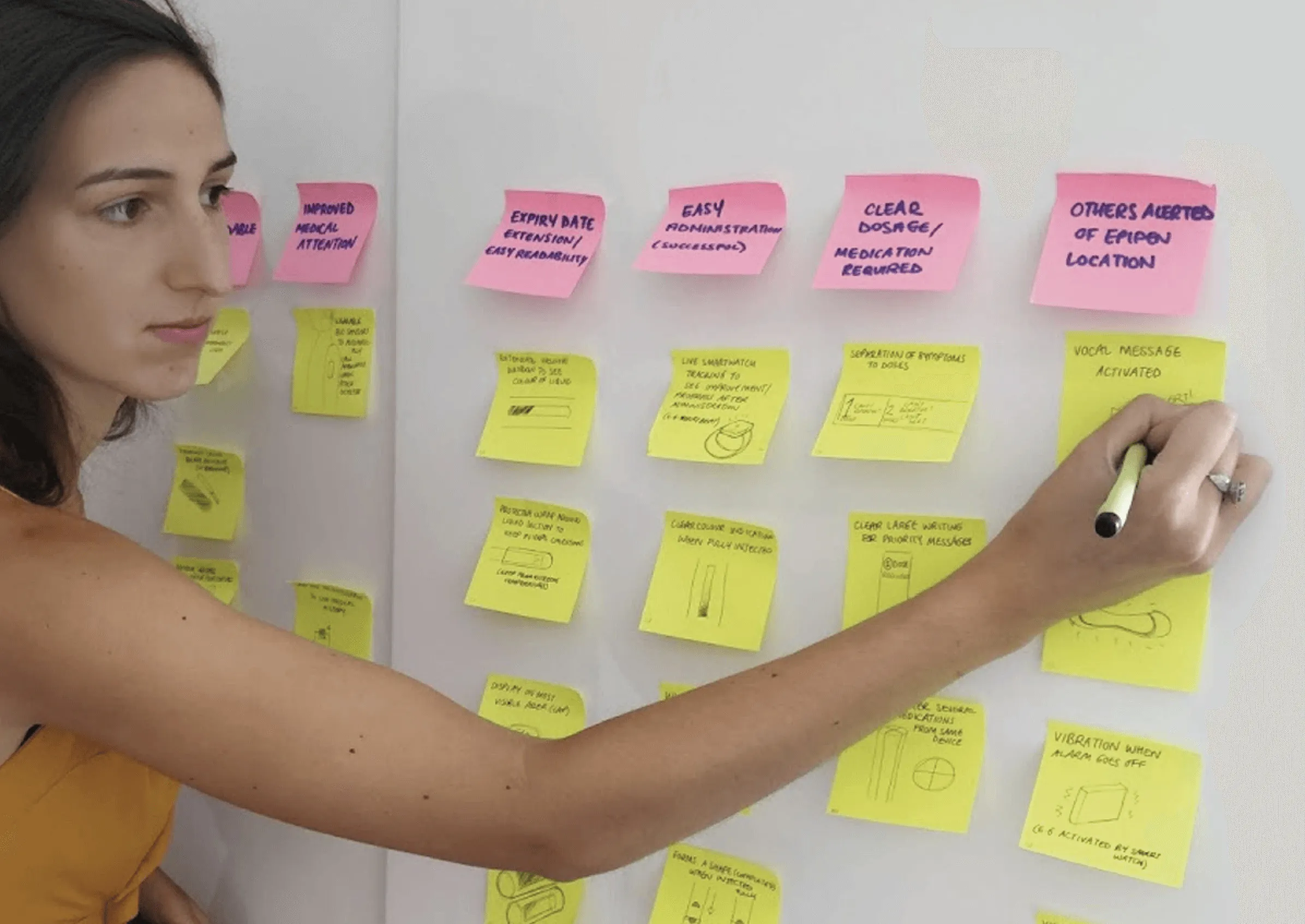
The concept
Alice came up with three concepts through brainstorming and sketches.
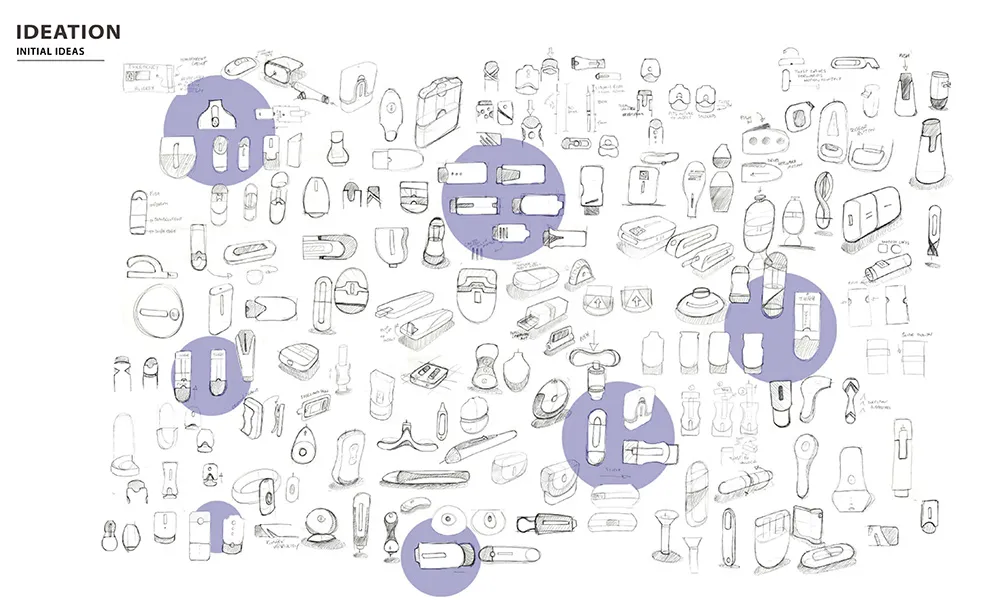
Concept A
This design resembles the look of a wide ballpoint pen and may therefore remove any inhibitions about using it. This is done in three simple steps: A cap is removed from one end of the instrument before use, then it is held against the allergy sufferer's thigh and the other end is pushed in - like a pen. The adrenaline is injected and a circle on the device indicates when the full dose has been administered.
Concept B
The second device is wider than the first because it has two adrenaline doses - two syringes are often required. This device is also intuitive to use: The skin-colored part illustrates which side is applied to the leg. A protective cap must be removed from the other side before use. The labels on the two buttons "Dose 1" and "Dose 2" are self-explanatory for users. Further urgent information such as emergency contacts can be called up via a QR code.
Concept C
The third design has an oval shape and some additional functions. With a clip on the back, the device can be attached to bags - practical for when you are on the move. Before use, you open a flap on the back and position the syringe. To unlock the device, press the end for two seconds. You will then hear an audio instruction explaining the next steps, during which the dose is injected into the thigh. Another dose is also provided for: the procedure can be repeated if necessary.
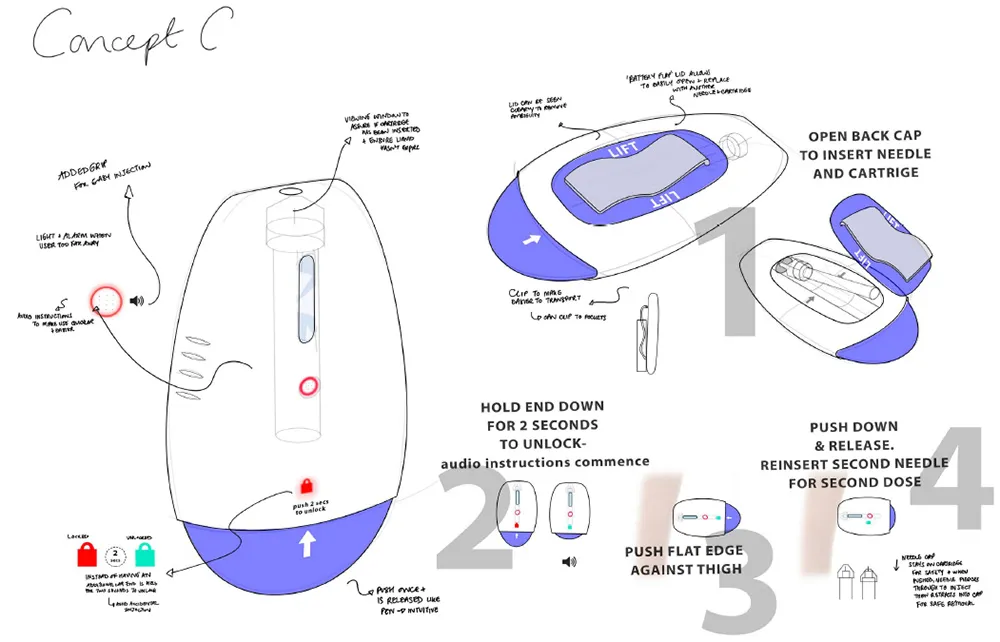
The final detailing
The next step towards the goal: prototyping to optimize the ergonomics and for suitable human dimensions. Alice used mood boards to get closer to the desired look. She also thought about the marketing: she designed a logo, formulated brand values and product associations. The brand goals:
- Allergy sufferers should be able to lead an active lifestyle without restrictions.
- Clear communication and instructions lead to a reassuring user experience.
- A safe feeling for product users: Even uninvolved people will be able to help them.
After fine-tuning the concepts, Alice had achieved the project goal: the final design.
The result
The AlliGo end product combines the best approaches from all three concepts:
OpticsThe shape is rectangular with rounded, soft edges. Features for safe use: A narrow window on the front shows whether the active ingredient has been administered. Above this, a circle of light indicates the status of the injection. On the back, the application is visualized in three steps. The flap is opened with a red slider to insert the syringe.
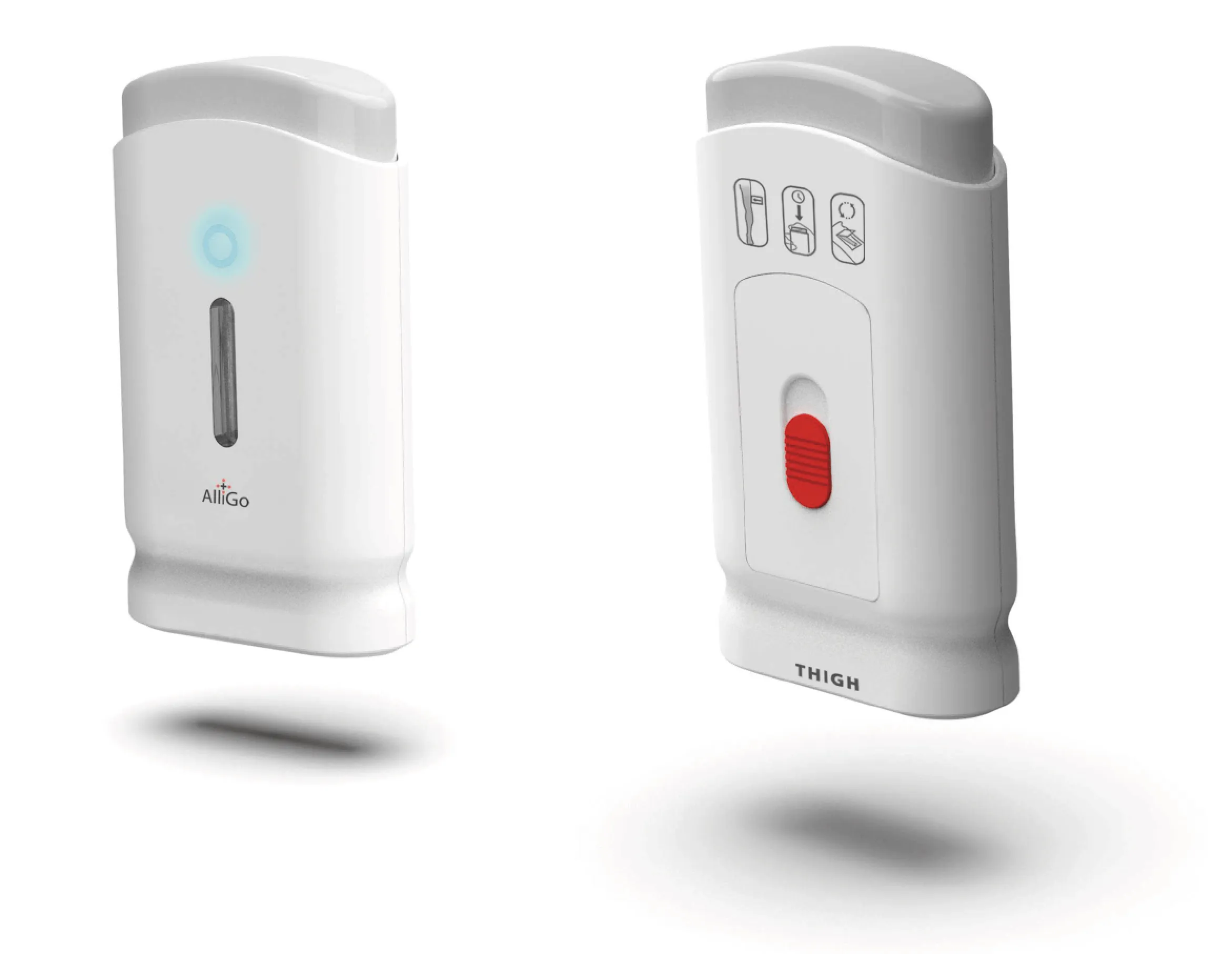
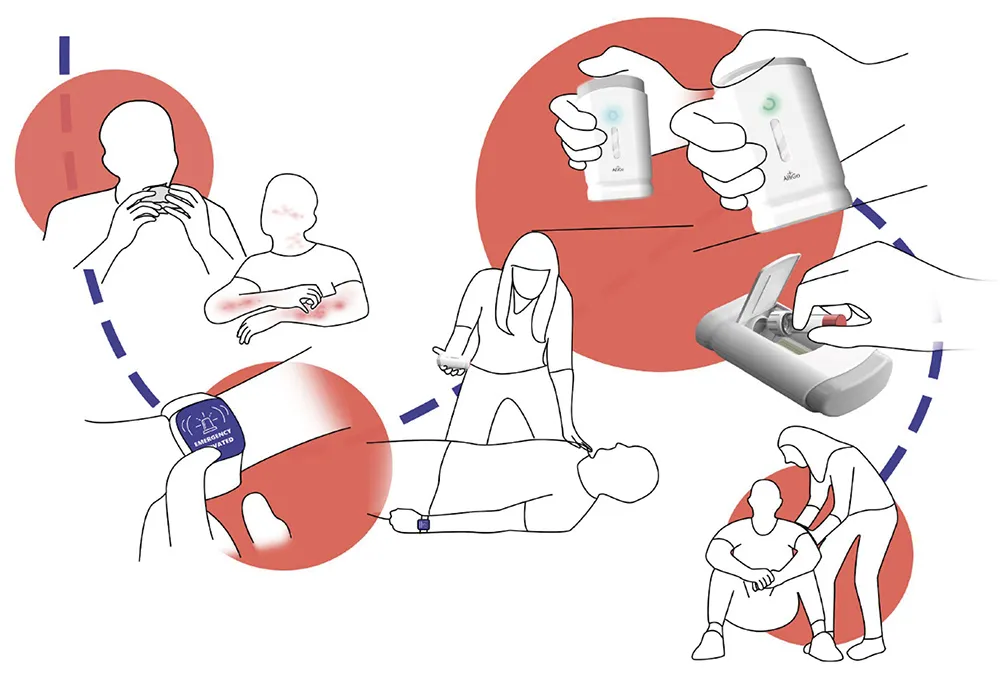
Transportation: Safe storage is also ensured: AlliGo can be transported together with the syringe and active ingredient in one package.
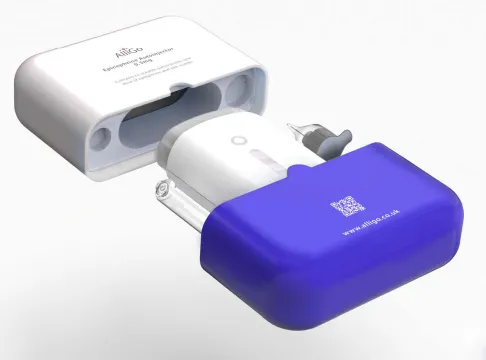
Key functionsAlliGo is charged inductively. The syringes are still disposed of after use - but the instrument is kept.

Another outstanding feature is the connection to an app. This can be used to receive alarms when the existing active ingredients are about to expire. Conversely, an alarm can also be sent out: Emergency contacts and an emergency doctor are automatically called via an emergency button. Near-field communication (NFC function) reminds the user to carry AlliGo with them. If desired, personal medical information on allergies can also be entered in the app - so helpers, relatives and doctors are quickly informed in emergency situations. A training course also instructs users on how to use their lifesaver correctly.

AlliGo ensures greater safety for those affected and the correct handling of anaphylactic shocks by everyone involved. Thanks to Alice for this creative achievement!
If you like this concept or individual aspects of it, or if you think we should work on it further, please just let us know. We look forward to receiving your feedback at vordenker-projekte@wilddesign.de or via the e-mail button below.
Frequently asked questions

